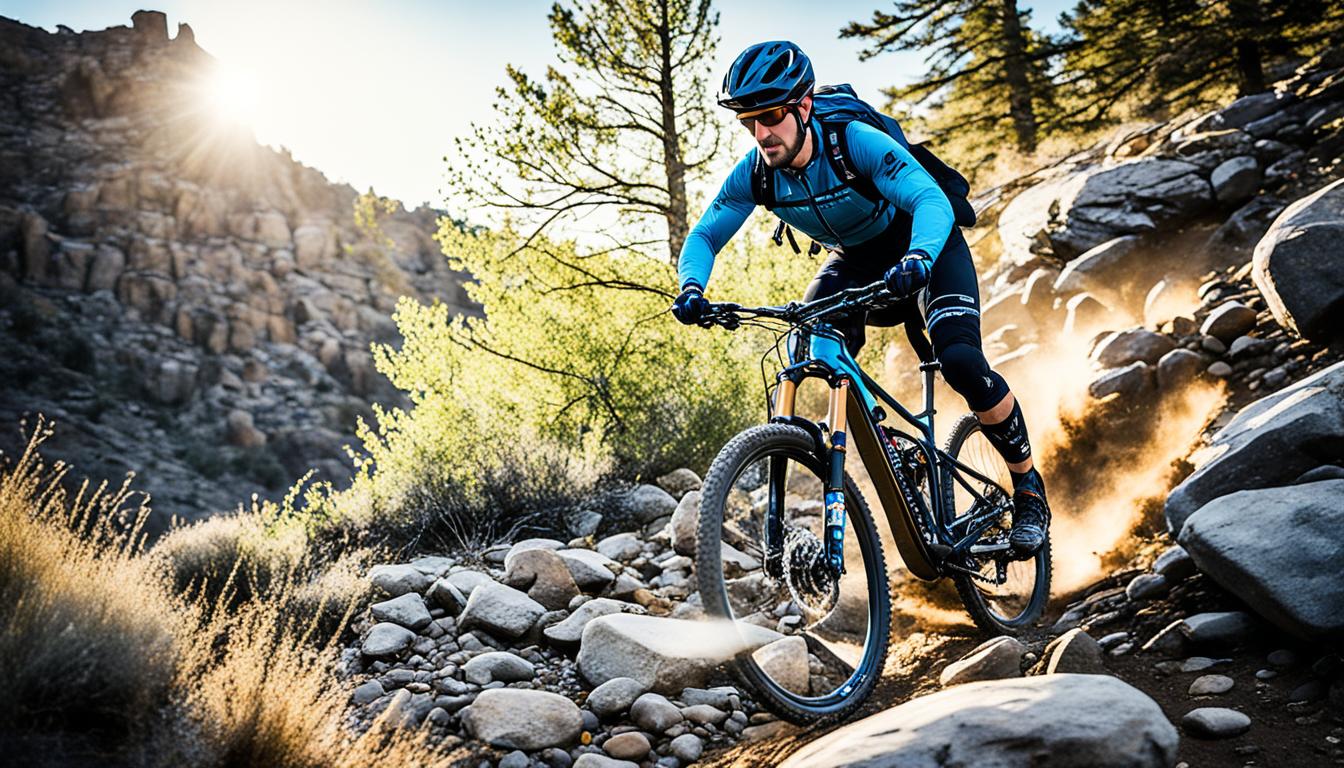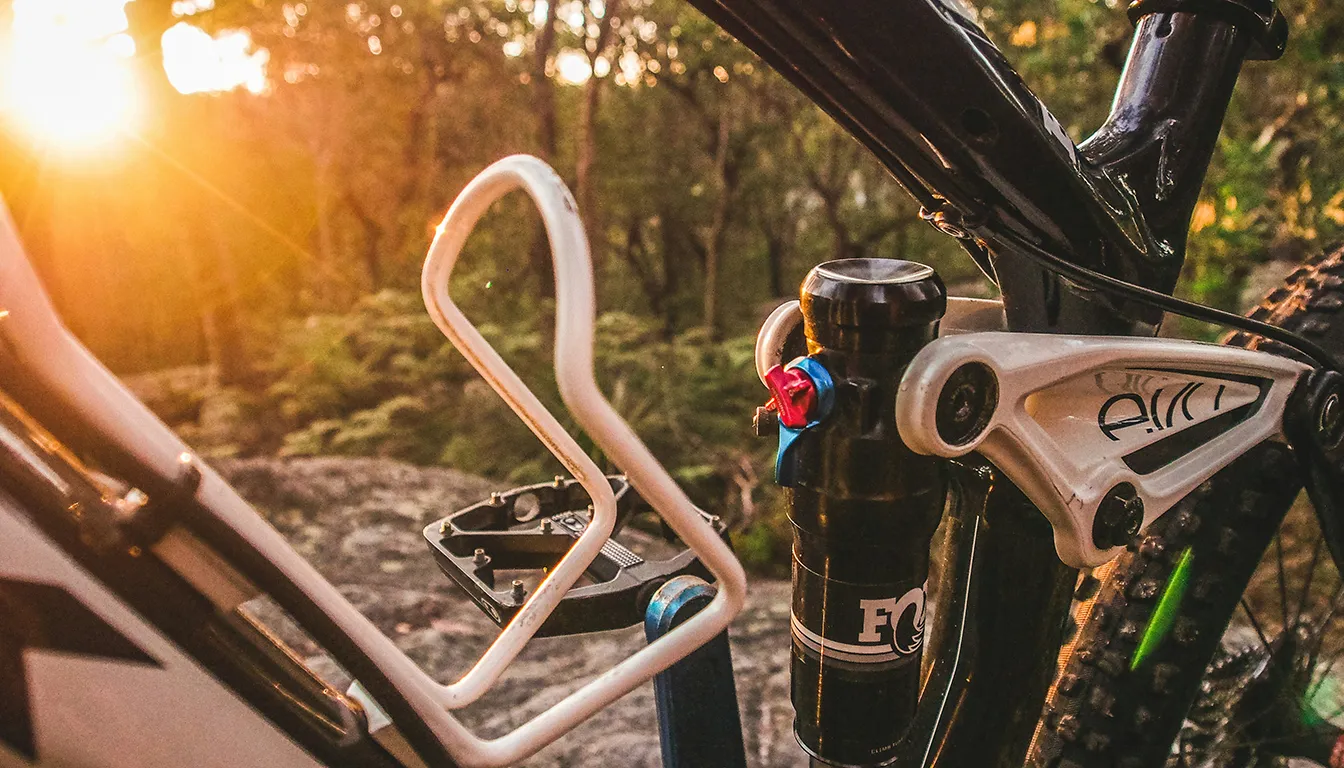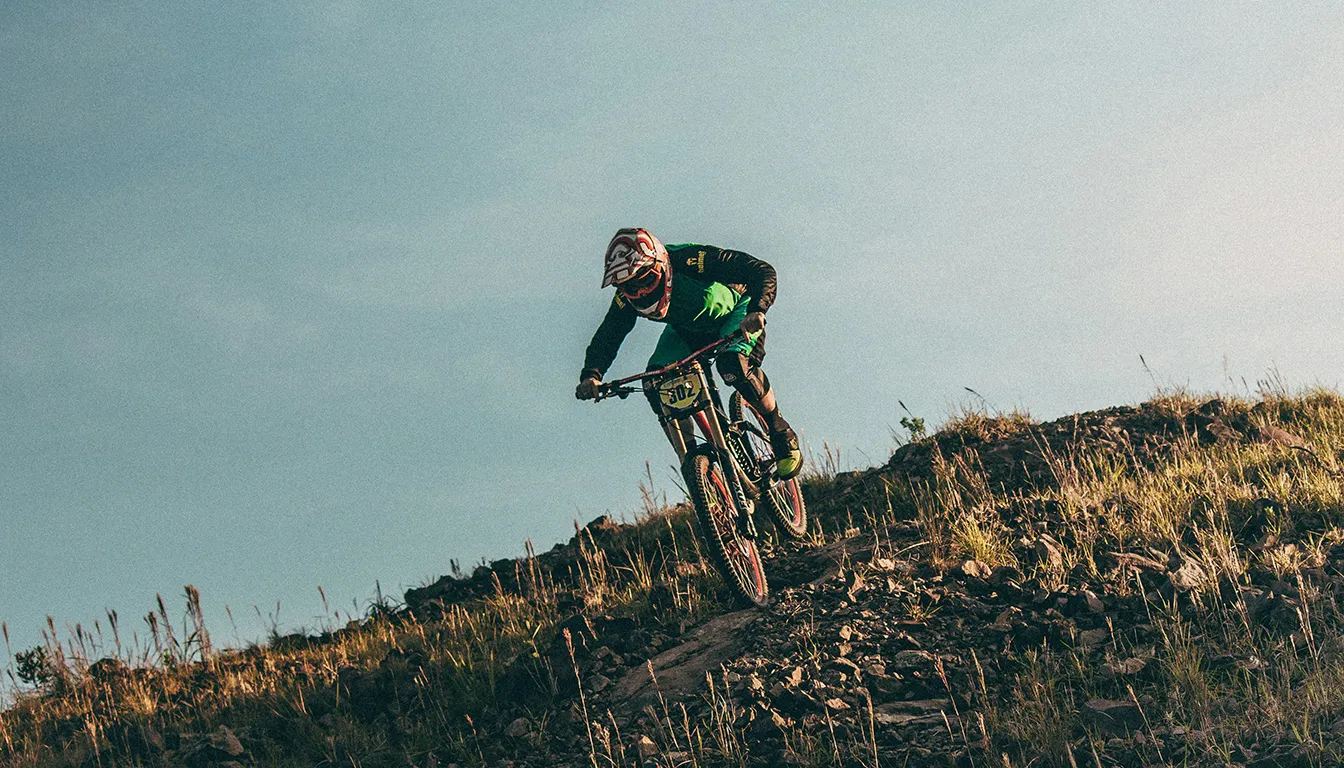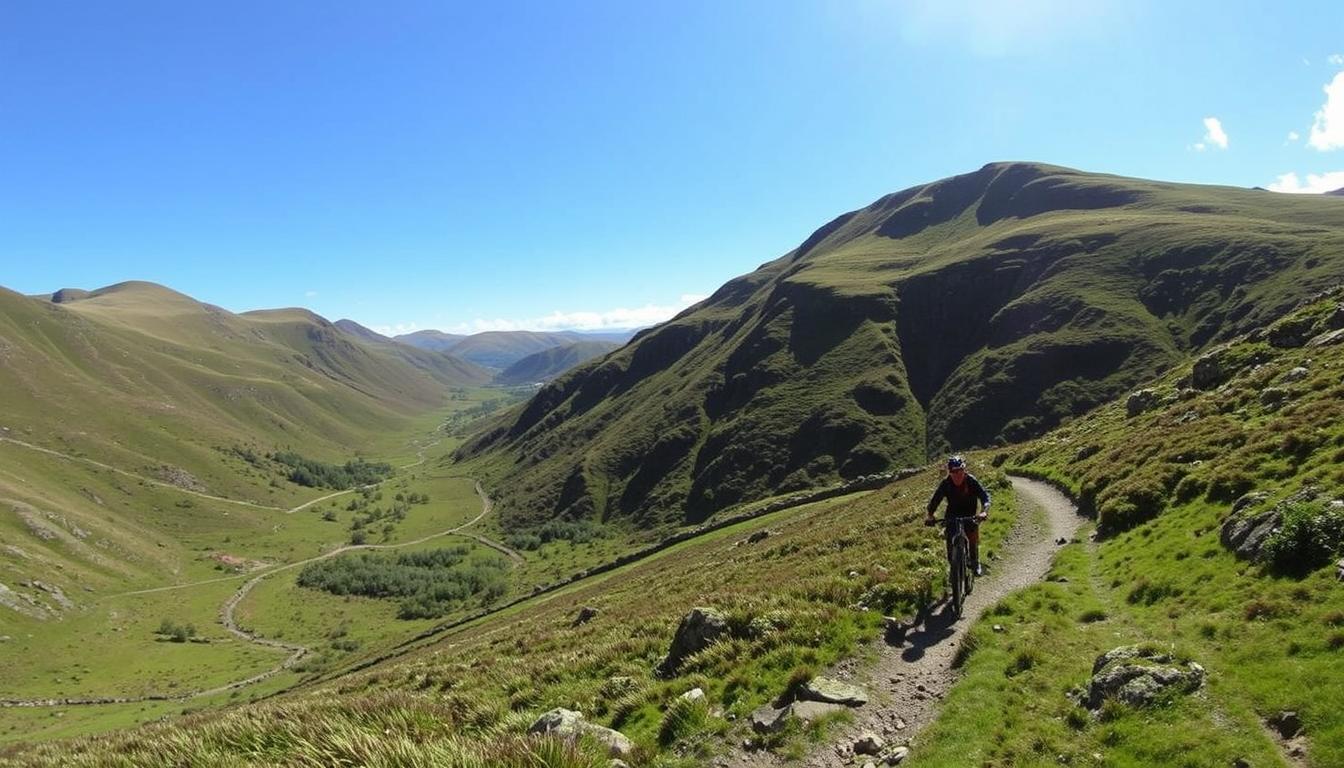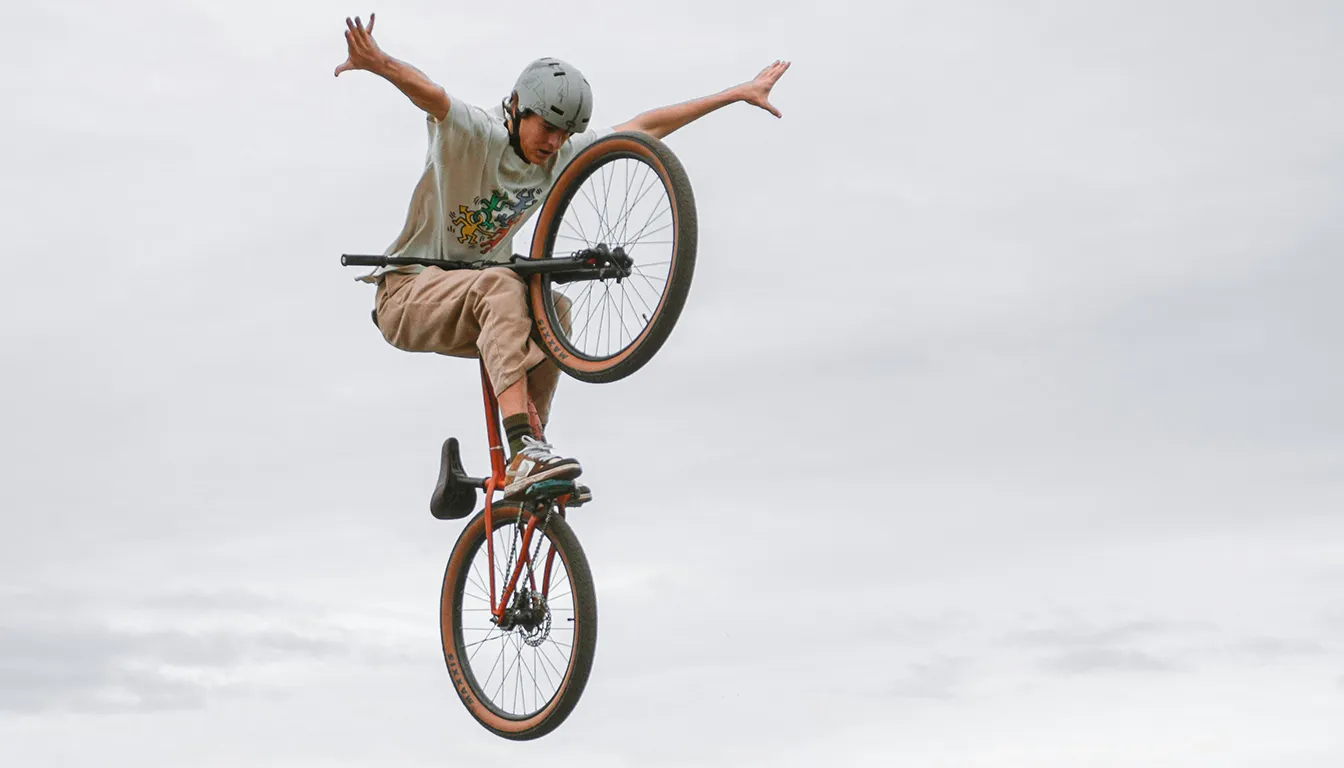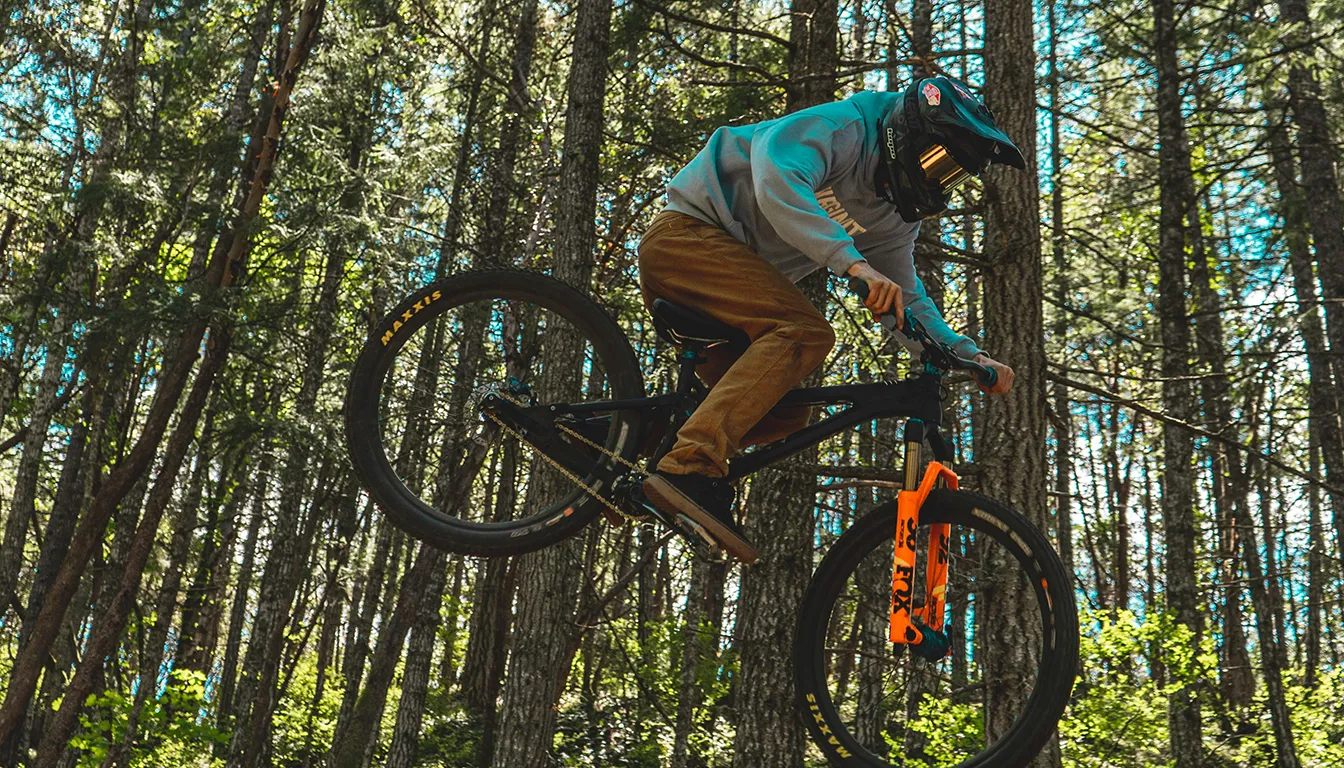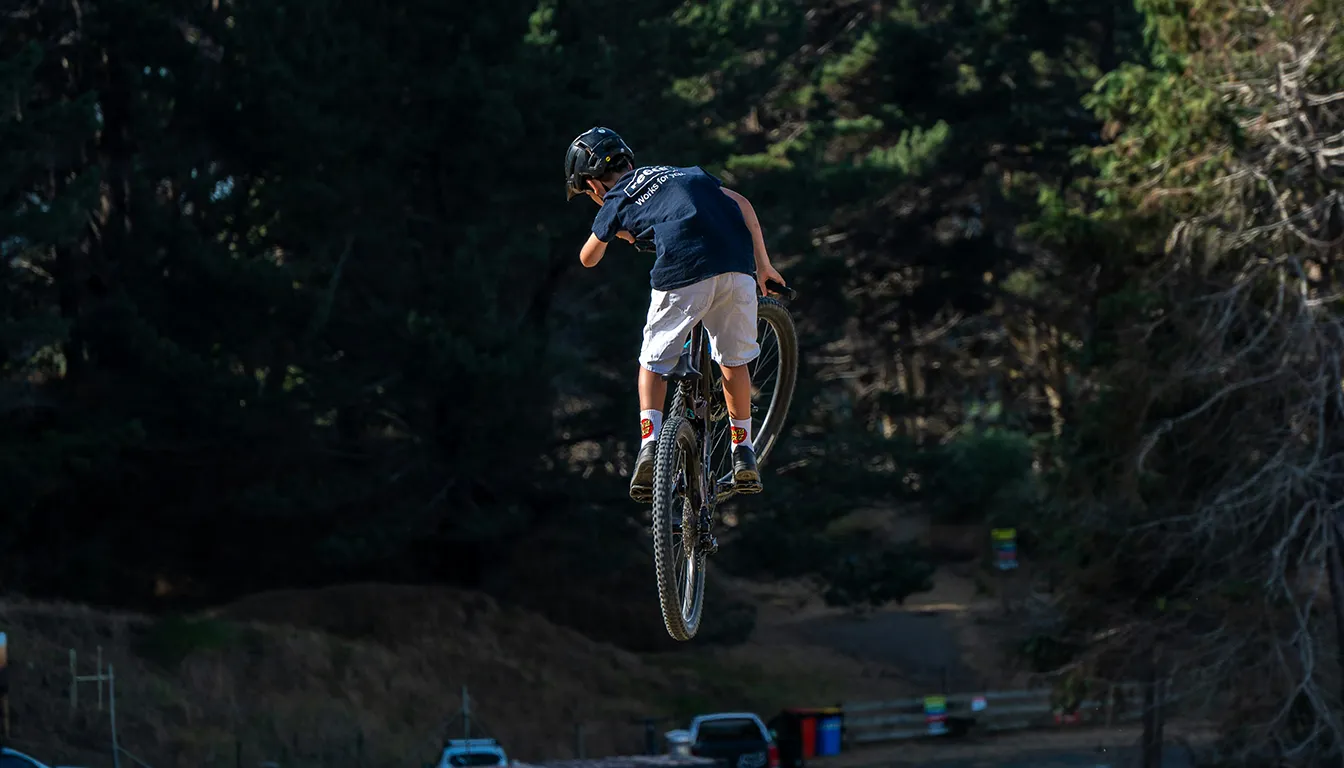Dirt jumping is a thrilling part of mountain biking. It combines skill with confidence. It’s vital to learn jumping techniques and basic BMX tricks. To get good, you need practice, time, and bravery. Also, taking dirt jumping tips from experts will help you improve fast.
Flying through the air on your bike is amazing. It also teaches you useful biking skills. Start by mastering basic techniques, then try harder jumps. This advice is great for beginners and seasoned riders alike. With the right methods, every ride brings joy and excitement.
The Importance of Proper Gear
Dirt jumping is both thrilling and challenging. This makes having the right gear crucial for safety and performance. The correct equipment not only makes the experience better but also lowers injury risk. It is vital for every aspiring rider to invest in protective gear.
Invest in Protective Equipment
For dirt jumping, safety always comes first. A proper helmet, especially a full-face one, is essential for protection. It can prevent serious injuries and save on future dental bills. Don’t forget knee and elbow pads. They protect you during falls and boost confidence for bigger jumps.
- Gloves enhance grip and control.
- Sturdy shoes with stiff soles provide support and improve pedal power.
- Flat pedals make it easier to adjust body position and bail safely.
Choosing the Right Bike
Choosing the right dirt jump bike is key for top performance. Dirt jump bikes usually have a shorter wheelbase and smaller wheels. This makes them agile and perfect for quick moves. A specialised bike ensures the best jumping results. Think about what you need for comfort and control before making a choice.
With suitable gear and the right bike, dirt jumping becomes even more exciting.
Dirt Jumping Tips for Beginners
Entering the world of dirt jumping requires learning the basics first. Knowing how to tackle jumps safely builds confidence and skill. This helps beginners get ready for more exciting aspects of the sport.
Start Small and Progress Gradually
New riders should start with the smallest jumps. Rolling over them without seeking airtime is key at first. This step-by-step approach helps riders get better before moving to bigger challenges. It builds the muscle memory needed for more enjoyment later on.
Warm-Up is Key
Warming up before jumping is vital for both safety and performance. Riding around a pump track gets cyclists used to their bikes. It also lessens the chance of injury and clears the mind for jumping. A good warm-up can make a big difference in jumping success.
For tips on perfecting your jumps, check out the advice from Mike Smith. His guide offers a lot of useful information.
Essential Techniques for Successful Jumps
To master dirt jumping, it’s key to grasp crucial techniques. Correct jumping methods affect how high and smoothly one can jump.
Maintain a Neutral Position
Adopting a neutral stance before a jump is vital. Bend your knees and elbows. Keep your gravity centre over the bike. This posture aids in better balance and control when in the air. Handling the bike well in this position ensures stability and better jump precision.
Follow the Lip
When nearing the jump, riders must sync with the lip’s path. They need to apply even pressure on the bike’s ends. This avoids being thrown off at take-off and leads to smoother landings. Knowing the jump’s curve helps keep balance and set sights on where you want to land.
Advanced Dirt Jumping Tips
To improve in dirt jumping, focus on skills that boost both how well you jump and your safety. It’s key to control your bike in the air and move smoothly from one jump to another. We’ll look at how to get better at managing your bike mid-air and getting a smooth flow in your jumps.
Mastering Air Control
Being good at controlling your bike while in the air is vital. Riders need to adjust how they position themselves to land smoothly. By learning moves like turning the handlebars, you stay more flexible in the air. Also, looking ahead helps spread your weight evenly, making your landing safer and preventing front wheel crashes.
Developing Flow between Jumps
Having a smooth flow in your jumps not only looks good but is safer. Instead of jumping straight up, angle your take-off. This keeps your speed up and helps you move easily to the next jump. With practice, your rides will have a nice rhythm. This is great for doing more difficult jumps.
Conclusion
Mastering dirt jumping takes dedication and patience. We’ve seen that gradual learning is key to success. Every new skill leads to better biking, whether you’re a newbie or experienced.
By using the tips we shared, riders can keep getting better. Plus, being part of the BMX community helps a lot. It’s great to share knowledge and grow together with others who love biking.
Dirt jumping is all about fun and facing new challenges. So, get your bike ready, wear your helmet and pads, and enjoy the journey! Don’t forget to check out more tips on enduro mountain biking to improve your rides.
FAQ
What essential protective equipment do I need for dirt jumping?
Safety gear is key for dirt jumping. A top-notch helmet, especially a full-face model, is crucial. Knee pads help soften falls. Gloves and solid shoes boost grip and bike control.
How do I choose the right bike for dirt jumping?
Picking the right bike boosts your performance. Dirt jump bikes have a short wheelbase and small wheels for agility. Begin with a bike made for dirt jumping. Later, adjust it as you gain experience.
What should beginners know before starting with dirt jumping?
Beginners should take it slow. Start with the easiest jumps. First, learn to roll them on the ground. This slow start builds confidence. Then, move to bigger and more complex jumps.
Why is warming up important before dirt jumping?
Warm-ups, like riding a pump track, get you ready. They improve your control and lower injury risk. This means you can jump better and safer.
What is the neutral position, and why is it important?
The neutral position means bending your knees and elbows before a jump. It keeps your weight balanced over the bike. This balance improves control and ensures a safe landing.
How should I approach the lip of a jump?
Approach the lip by moving with its shape. Apply pressure on the bike’s front and back equally. This keeps you in control. It leads to smoother take-offs and landings.
What is air control, and how can I develop it?
Air control lets you handle mid-air moves. To get better, try bar turns to avoid rigidity. Keep your head forward when jumping. It keeps your weight balanced for a smoother landing.
How can I create flow between multiple jumps?
For flow between jumps, take off at angles. It’s better than jumping straight. This lets you move smoothly from one jump to the next. It keeps your speed even throughout.

